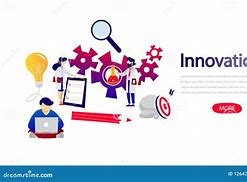
Innovative Solutions: Exploring Custom Software Development Trends
Custom software development trends refer to the evolving techniques, methodologies, and technologies used in the creation of tailor-made software solutions designed to meet specific business needs or user requirements. These trends encompass various aspects of the development process, from initial concept and design to implementation, deployment, and ongoing maintenance. Contained within these trends are innovations that drive efficiency, scalability, security, and user experience enhancements in custom software development. This includes the adoption of agile and DevOps practices for iterative and collaborative development, the integration of AI and machine learning for intelligent automation and data-driven insights, the use of cloud computing for flexible and scalable infrastructure, and the emphasis on cybersecurity measures to protect sensitive data and ensure compliance. Moreover, trends in custom software development also encompass the rise of low-code and no-code platforms, which empower users with varying technical backgrounds to participate in the development process. These platforms accelerate time-to-market and enable rapid prototyping and iteration of software solutions. In essence, custom software development trends encapsulate the continuous evolution and adaptation of tools, methodologies, and technologies that shape the landscape of bespoke software solutions, catering to the unique requirements and challenges of modern businesses and organizations.
1.Agile and DevOps Adoption:
Increasing adoption of agile methodologies and DevOps practices for iterative development, continuous integration, and faster deployment cycles.
2.AI and Machine Learning Integration:
Utilizing artificial intelligence (AI) and machine learning (ML) to automate processes, gain insights from data, and enhance user experiences with intelligent features.
3.Cloud-Native Solutions:
Embracing cloud-native architectures for scalability, flexibility, and cost-efficiency in software development and deployment.
4.Cybersecurity Focus:
Heightened focus on cybersecurity measures to protect sensitive data, ensure regulatory compliance, and mitigate evolving cyber threats.
5.Low-Code/No-Code Platforms:
Rise of low-code and no-code platforms enabling faster development, easier customization, and broader participation across teams with varying technical expertise.
6.Microservices Architecture:
Adoption of microservices architecture for modular, independent services that improve scalability, maintainability, and agility.
7.Internet of Things (IoT) Integration:
Integration of IoT devices and platforms to collect real-time data, automate processes, and create connected experiences.
8.Blockchain Applications:
Exploration of blockchain technology for secure transactions, decentralized applications (dApps), and transparent data management.
9.User-Centric Design:
Emphasis on user-centric design principles to create intuitive interfaces, enhance user satisfaction, and drive adoption of custom software solutions.
10.Data Privacy and Compliance:
Ensuring robust data privacy measures and compliance with regulations such as GDPR or CCPA to protect user privacy and maintain trust.